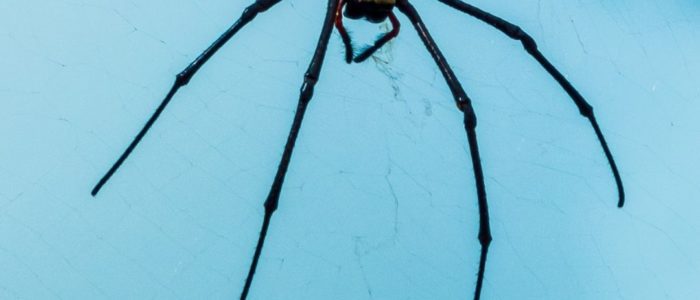Common Spiders in the Fall
Common Spiders in the Fall
When the leaves start to change and the air gets crisp, spiders become more noticeable around our homes and gardens. These eight-legged creatures are not just a part of the spooky season—they play a vital role in controlling insect populations and maintaining ecological balance. Here’s a look at some of the most common spiders you might encounter in the fall.
1. Orb-Weaver Spiders
Characteristics:
- Appearance: Orb-weavers are known for their large, circular webs and distinctive, often colorful, bodies.
- Size: They can range from small to quite large, with body lengths varying from 5mm to 25mm.
- Habitat: Found in gardens, forests, and fields, orb-weavers build their webs in open spaces to catch flying insects.
Behavior:
- Web Construction: These spiders are known for their intricate and symmetrical wheel-shaped webs.
- Active Time: Primarily nocturnal, they often rebuild their webs each evening.
2. House Spiders
Characteristics:
- Appearance: Typically brown or gray with a somewhat elongated body.
- Size: Around 6mm to 10mm in body length.
- Habitat: Commonly found indoors, especially in basements, attics, and other undisturbed areas.
Behavior:
- Web Construction: House spiders create messy, irregular webs in dark corners.
- Active Time: They are active year-round but more noticeable in the fall as they seek warmer indoor environments.
3. Wolf Spiders
Characteristics:
- Appearance: Brown, gray, or black with robust, hairy bodies and long legs.
- Size: They can grow up to 35mm in body length.
- Habitat: Found in leaf litter, grassy areas, and occasionally indoors.
Behavior:
- Hunting Style: Unlike web-builders, wolf spiders are hunters and rely on their speed and agility to catch prey.
- Active Time: Active hunters during the day and night.
4. Jumping Spiders
Characteristics:
- Appearance: Small, compact bodies with short legs and large front eyes.
- Size: Typically around 4mm to 15mm.
- Habitat: Found on plants, fences, and walls, both indoors and outdoors.
Behavior:
- Hunting Style: Jumping spiders are active hunters known for their excellent vision and ability to jump long distances to catch their prey.
- Active Time: Diurnal, primarily active during daylight hours.
5. Black Widow Spiders
Characteristics:
- Appearance: Glossy black with a distinctive red hourglass shape on the underside of the abdomen.
- Size: Females are larger, about 13mm, while males are smaller.
- Habitat: Found in dark, undisturbed places like woodpiles, sheds, and garages.
Behavior:
- Web Construction: Create irregular, tangled webs close to the ground.
- Active Time: Nocturnal, with peak activity at night.
While spiders might not be everyone’s favorite fall visitors, they play a crucial role in our ecosystems by controlling pest populations. Understanding these common fall spiders can help you appreciate their presence and minimize unnecessary fear. If you want to learn more about the spiders in your area or need advice on managing them, don’t hesitate to reach out to local pest control experts or entomologists.
Stay curious and enjoy the beauty of fall—spiders included!


Comments are closed.